Japan, a blend of Eastern tradition and Western modernity, offers an unparalleled travel experience. Delve into its rich history and ancient remnants strewn across the country.
If you’re considering international travel, Japan should top your list. Explore the reasons why it’s an incredible destination and discover our curated selection of must-visit spots.
From its vast north-south expanse to diverse mountainous landscapes, Japan’s natural beauty captivates.
The diverse landscape and breathtaking views captivate local fans and visitors worldwide alike. For anyone planning international trips, Japan is a non-negotiable inclusion.
Discover the allure of Japan, explore top destinations, and uncover popular attractions with us. Don’t miss out on this extraordinary adventure!


- 1. Japan’s stunning for its pure natural beauty
- 2. Mount Fuji (富士山)
- 3. Japan is one of the safest country for traveling abroad
- 4. Japanese Cuisine, Food
- 5. Beautiful Temples, Shrines, and Gardens
- 6. Japanese Hospitality
- 7. Efficient and Convenient Public Transportation in Japan
- 8. Thrilling Adventures in Japan
- 9. Japan’s Festivals: Celebrating Tradition and Unity
- 10. A Country of Cleanliness and Environmental Care
- 11. Japan: The Shopper’s Paradise
- 12. Where Uniqueness and the Unexpected Thrive
- 13. Sakura: The Beauty of Cherry Blossoms in Japan
- 14. Studio Ghibli: The Magical World of Animation
- 15. Hot Springs (Onsen) and Public Baths (Sento) in Japan
- 16. UNESCO World Heritage Sites in Japan
- 17. Japan: Castle country
- 18. Japan: Sumo & Rugby country
- 19. Future Tech and Robots
- 20. Unique & Traditional Accommodations
- Why don’t you travel to Japan?
- Social Links
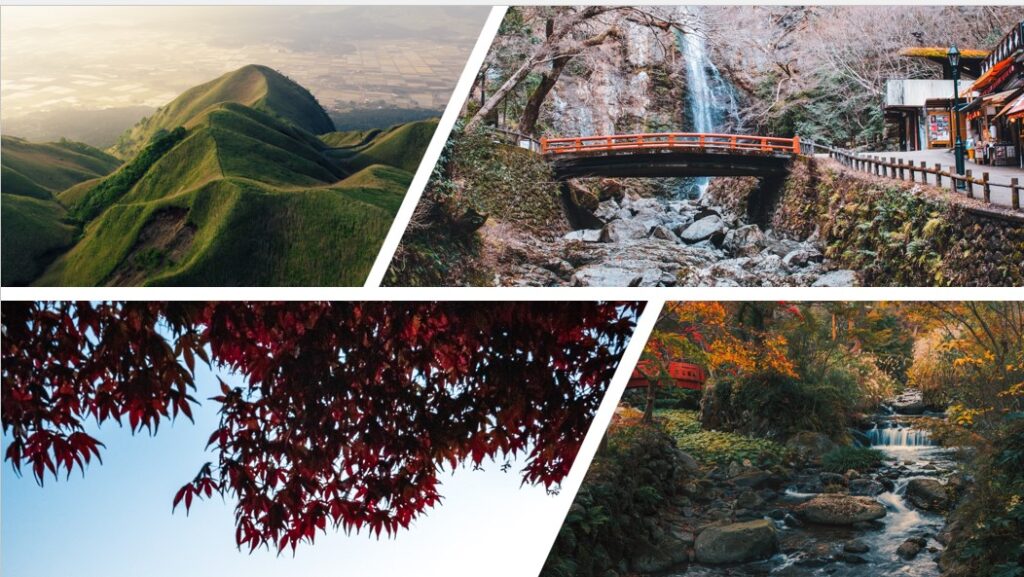
1. Japan’s stunning for its pure natural beauty
Mount Fuji / Hokkaido / The Alps / Kamikochi / Okinawa / Nikko / Arashiyama Bamboo forest.
Japan’s nature invites travelers with a captivating variety of landscapes. It seems to lead one to explore pure nature.
One of Japan’s most iconic natural wonders is Mount Fuji. Even today, Mount Fuji remains an active volcano and holds the title of Japan’s highest summit, towering impressively at 3,776 meters (12,389 feet).
This majestic mountain has been highly esteemed in Japanese culture and history for centuries, frequently depicted in art, literature, and poetry.
limbing Mount Fuji is a cherished and meaningful experience for both locals and visitors, holding profound significance. It’s said that reaching the summit allows one to marvel at its breathtaking views. Besides Mount Fuji, Japan boasts other natural marvels.
Hokkaido is considered a paradise for nature enthusiasts. Hiking in the renowned national parks like Daisetsuzan and Shiretoko, encountering wildlife, presents a picturesque, almost unreal natural landscape.
Japan also has the Alps. True to its name, this region is famous for its pristine, lush lakes and landscapes. The water here is notably renowned for its drinking quality. Kamikochi in the Northern Alps is a favored tourist spot for hiking and capturing stunning views and crystal-clear waters.
Japan’s coastal areas are equally enchanting. Enjoy kayaking among thousands of small islands or experience island-hopping. Along the rugged and wild coastline of the Noto Peninsula, witnessing steep cliffs meeting the sea while gazing away from the land offers a glimpse of nature’s grandeur.
Okinawa, Japan’s southernmost islands, brim with tropical weather and atmosphere. Sandy beaches, rich coral reefs housing abundant marine life, and emerald seas await snorkelers and divers. The Yanbaru Forest is home to unique plants and animals not found elsewhere in Japan.
From serene lakes and peaceful rivers for hiking in Nikko to cycling along the Shimamami Kaido, to leisurely walks in Kyoto’s Arashiyama Bamboo Forest, Japan’s nature wears many faces.

2. Mount Fuji (富士山)
Best Climbing Season: From July to September
Mount Fuji stands tall at an elevation of 3,776 meters (12,389 feet), symbolizing Japan’s beauty and resilience. It is a majestic volcano with a perfect cone shape, exuding grace and beauty.
This serene mountain holds significance beyond being the tallest peak; it embodies centuries of depth, serving as a profound spiritual and literary icon.
For ages, Mount Fuji has inspired countless artistic and literary works, becoming a muse for artists, poets, and photographers.
Its beauty varies with the seasons, adorned with cherry blossoms in spring and blanketed in pure white snow in winter, portraying nature’s splendor in different hues.
Designated as a UNESCO World Cultural Heritage site, Mount Fuji is Japan’s most climbed mountain, attracting thousands of climbers globally.
The climbing season typically spans from July to early September, drawing numerous visitors during this time.
However, recent overcrowding from international visitors has led to challenges in maintaining its pristine beauty, primarily due to the significant issue of trash.
Currently, there isn’t an entrance fee, but there might be future considerations for a Mount Fuji climbing fee to facilitate systematic and effective management.
Trekking Mount Fuji offers not only physical challenges but also a profound spiritual journey.
Along the ascent, one can taste traditional Japanese cuisine and find the rest in various mountain lodges.
Reaching the top after a tough climb treats you to an incredible sunrise. Picture vibrant shades of orange and pink painting the sky—it’s humbling and really moves you. Mount Fuji truly captures Japan’s spirit, embodying its beauty, strength, and energy.
If you prefer enjoying Mount Fuji from a distance, there are great viewpoints to explore. Fujiyoshida’s Chureito Pagoda, surrounded by cherry blossoms, and Kawaguchi and Yamanaka lakes offer peaceful reflections of the mountain.
As mentioned earlier, Mount Fuji means more than just Japan’s tallest peak. It symbolizes Japan’s soul and reflects the profound bond between Japan and nature.

3. Japan is one of the safest country for traveling abroad
When preparing for overseas travel, safety is something that must be checked, and for some, it might be a top priority.
How safe is the country? Which areas pose risks, and where should one avoid visiting late at night?
One of the reasons Japan is highly recommended for travel compared to other countries is the pervasive sense of security throughout the nation.
Tokyo, ranking among the safest cities globally, akin to Seoul in South Korea, exemplifies Japan’s safety.
You’ll easily notice the low crime rate, cleanliness in public places, and the meticulous order in Japanese society.
Even in bustling cities like Tokyo and Osaka, you can experience a serene and polite atmosphere.
Japan’s societal culture places a premium on safety, evident not only in children commuting to school but also in the remarkably low crime rates in rural areas.
It’s uncommon for belongings left briefly on café tables or public chairs to go missing. But still, it’s advisable not to test this!
Comparing the crime rates in Japan and the United States per 100,000 people, a table reveals a stark contrast:
| Crime Type | Japan | US |
|---|---|---|
| Murder | 0.4 | 4.2 |
| Gun-related Murder | 0.04 | 4.43 |
| Car Theft | 28.2 | 237.4 |
| Theft | 59.9 | 542 |
| Assault | 19.1 | 248.9 |
| Robbery | 0.01 | 98 |
The culture of safety is deeply rooted, starting from childhood education that emphasizes personal responsibility and communal happiness.
Japan’s culture, societal atmosphere, and orderliness stem naturally from childhood teachings and experiences.
Stories of passengers or station staff immediately returning valuable items left on trains are quite common. Acts of honesty and diligence are an integral part of everyday life in Japan.
From the bustling streets of Tokyo’s Shibuya Crossing to the tranquil temples in Kyoto, or even traveling alone in the countryside, regardless of the destination, there is no doubt Japan is a country where you can enjoy a relaxed and safe journey.
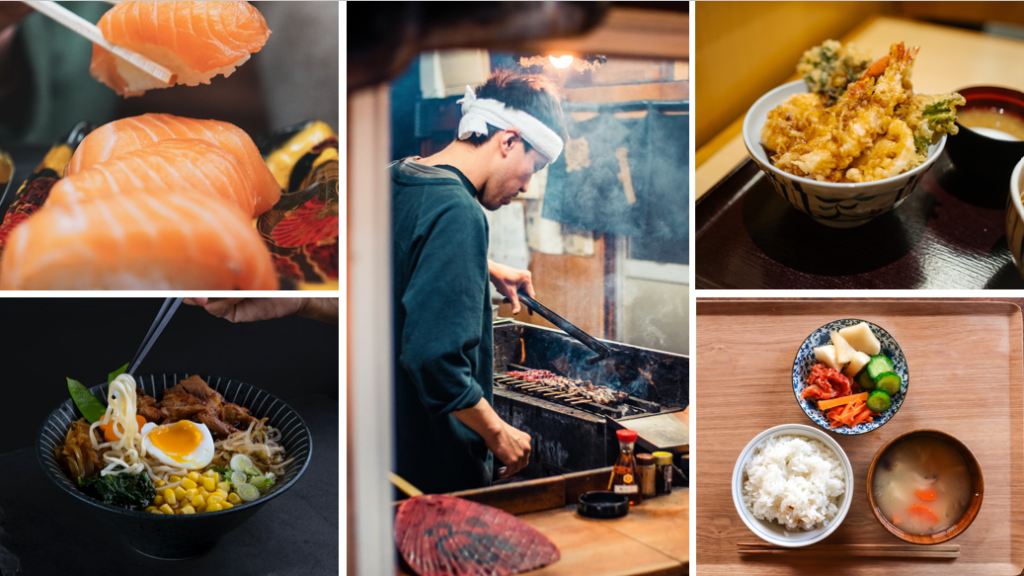
4. Japanese Cuisine, Food
Sushi, Ramen, Tempura, Kaiseki, Washoku, Donburi, Yakitori, Takoyaki.
Washoku is renowned for its artistic presentation, diverse flavors, and insistence on using fresh seasonal ingredients.
That’s why traveling Japan is like embarking on a gastronomic journey through its various regions.
The essence of Japanese cuisine lies in preserving the natural flavors of its ingredients.
Perhaps the most famous, Sushi epitomizes this philosophy. Thinly sliced raw fish perfectly seasoned atop vinegar-infused rice embodies a harmonious blend of taste and texture.
Whether savoring nigiri sushi at a Michelin-starred restaurant in Tokyo or relishing street-side sushi in Osaka, both exude quality and craftsmanship.
Japan’s culinary culture of dedicating attention to small details feels like a lesson to learn.
Ramen, the quintessential Japanese food that’s universally adored, showcases another facet of Japanese cuisine.
Each region boasts its unique ramen style, with varied broths, noodles, and toppings.
Fukuoka boasts the rich pork bone broth and thin noodles of Tonkotsu Ramen.
Sapporo, on the other hand, is renowned for Miso Ramen, featuring a flavorful miso-based broth.
Shoyu Ramen, with its savory soy sauce base, is the most common type of Japanese ramen. You’ll find traditional ramen shops scattered throughout the city, inviting enthusiasts to enjoy a ramen journey.
Tempura, a dish of seafood and vegetables coated in batter and deep-fried, showcases the artistry of Japanese cuisine.
The delicate, crispy coating juxtaposed with the soft, flavorful ingredients makes tempura restaurants fascinating.
Japanese tempura has a distinctly different taste and texture from other fried foods.
Kaiseki cuisine, a traditional multi-course meal, epitomizes the pinnacle of Japanese cuisine, changing with the seasons.
It’s a meticulous preparation of a series of dishes using fresh local ingredients found at Ryokans (traditional inns).
Each ryokan offers various and unique kaiseki courses, highlighting the artistry of Japanese cuisine that values both aesthetics and taste.
Takoyaki, Japan’s signature dish loaded with octopus, is immensely popular as street food in Osaka, now easily found throughout Japan.
Okonomiyaki, a flavorful pancake, is a must-try in Hiroshima, layered with noodles and topped with a rich sauce.
Yakiniku from Kobe delivers the rich taste of Japanese wagyu beef.
Kaiseki from Kyoto accentuates the artistry of Japanese cuisine, while traditional Japanese sweets, matcha, and sake add flavor.
Japanese food reflects a culture that elevates it as an art form, and its joy and depth are boundless.
Prices may vary from street-side eateries to high-end restaurants, yet the craftsmanship in handling food remains consistent, showcasing the charm and tradition of Japanese cuisine.

5. Beautiful Temples, Shrines, and Gardens
Kinkakuji / Todaiji / Meiji Shrine / Fushimi Inari / Torii Gate / Ryoanji
There are thousands of temples and shrines scattered throughout Japan, deeply ingrained in the country’s spiritual heritage, resonating within its landscapes and lives.
These sacred places not only offer glimpses into Japan’s religious traditions but also provide a space to pause from the bustling everyday life for self-reflection.
You’ll encounter shrines, both grand and small, intimately linked with daily life, even amidst the busiest urban hubs.
Buddhist temples like Kinkakuji in Kyoto and Todaiji in Nara boast awe-inspiring structures adorned with intricate woodwork and gilded embellishments.
Serving as places for prayer, meditation, and contemplation, there are experiences of Buddhist teachings surrounded by serene gardens and centuries-old art.
The enchanting beauty of gardens harmonizing with nature is an essential allure of these travels.
Shrines, originating from Japan’s indigenous beliefs, revere kami (god), the spirits of nature and ancestors, marking their historical origins.
It’s believed that few people today seek these with such deep significance.
These sites are often sought for making wishes and prayers, reflecting Japan’s deep-rooted indigenous elements.
Among the most famous shrines in Japan are Meiji Shrine in Tokyo and Fushimi Inari Taisha in Kyoto. The Torii Gate, symbolizing the transition from the profane to the sacred, holds particular significance.
Passing through its vermilion arches are a visually enchanting experience and holds historical and spiritual meanings.
While now known more as a tourist spot for photography, the original significance remains somewhat diluted.
The Zen garden with meticulously raked gravel and delicately placed rocks exemplifies Japan’s appreciation for simplicity and mindfulness.
Ryoanji Temple in Kyoto, famed for its Kare-sansui (dry landscape) garden, houses 15 rocks, each offering a moment for contemplation and reflection.
Architectural structures, art, and symbols seen in Japan’s temples and shrines provide insights into the country’s spiritual traditions.
Originally places of spiritual significance, these temples and shrines continue to serve that purpose.
Temples and shrines aren’t limited to historical cities. You’ll find them easily in remote mountains, isolated islands, and even amidst bustling city centers, often surprising with their presence.
Japan appeals its captivating temples and shrines, offering cultural richness, spiritual contemplation, and aesthetic appreciation.
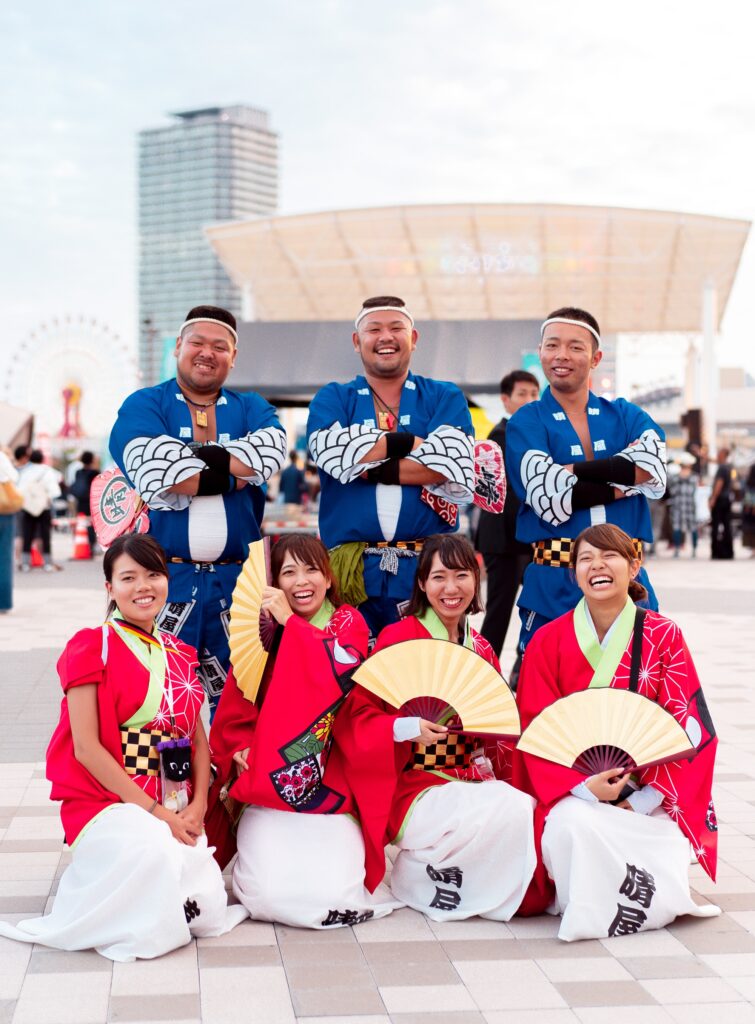
6. Japanese Hospitality
Irasshaimase(いらっしゃいませ) / Omotenashi (おもてなし) / Dado
The renowned hospitality and courtesy in Japan might just be the proof of the warmth and kindness ingrained in the Japanese people.
Japanese culture strongly emphasizes respect, courtesy, and consideration towards others, making it especially welcoming and considerate for travelers. Engaging with locals becomes an integral part of the travel experience, offering warmth and understanding.
Let me talk about the general demeanor and societal empathy prevalent among the majority of Japanese people, rather than delving into the deeper cultural nuances and diverse opinions surrounding Japanese personality traits.
The moment you arrive in Japan, you’ll be greeted with “Irasshaimase!” (meaning “Welcome!”). And it comes with a genuine smile.
Whether it’s a bustling train station or seeking directions on a quiet street, encountering helpful and kind Japanese individuals is quite common.
In Japan, “Omotenashi,” the art of wholehearted hospitality, is deeply embedded in their way of life.
From the warm hospitality in ryokans and hotels to flawless restaurant services and the meticulous care of attendants, you’ll experience it throughout your journey.
Hence, tourists often marvel at the honesty and diligence of the Japanese.
Stories of lost items being returned without a fuss or locals readily assisting tourists in need are not uncommon.
This spirit of Omotenashi in Japan ensures a comfortable and safe journey.
Beyond courteous interactions, Japanese people are eager to share their culture and traditions with visitors.
They’ll go out of their way to help you understand Japan more deeply, whether through participating in cultural practices, joining festivals, or learning traditional crafts.
Engaging with locals and experiencing their warmth and hospitality becomes an integral part of traveling in Japan.
It allows for creating enduring memories and experiencing Japan’s distinctive culture of care, respect, and courtesy.

7. Efficient and Convenient Public Transportation in Japan
Shinkansen / Japan Rail Pass / Bus/ Subway, Metro / Taxi / Tram
Japan’s public transportation system is renowned for its efficiency, punctuality, and extensive services, making it one of the most traveler-friendly systems globally.
The integrated network of trains, subways, buses, and trams allows for easy movement across Japan’s cities and regions.
However, it’s famously intricate, so be cautious as the next train might take you somewhere unexpected!
At the core of Japan’s transport system lies the Shinkansen, the high-speed train, reaching speeds of up to 320 kilometers per hour (200 miles per hour), connecting major cities like Tokyo, Kyoto, Osaka, and Hiroshima, facilitating smooth intercity travel and day trips.
While navigating within cities is convenient through subways and buses, there are relatively more aged stations.
These older stations may lack escalators or elevators, sometimes finding challenges in finding them.
For tourists, the Japan Rail Pass is a highly efficient option.
It allows unlimited use of JR trains, including the Shinkansen, for a specific duration, making it cost-effective for sightseeing.
The dedication to precision and time in Japan’s transportation system extends not only to trains but also to buses and trams.
Despite tight schedules, it’s arrived in time amazingly.
The meticulous planning ensures safe and easy travel for tourists and travelers. The highly systemized culture might be a bit overwhelming for those unfamiliar with such systems.
One cannot overlook the convenience and efficiency of Taxis, a significant characteristic of Japan’s public transport.
Japanese taxis are impeccably clean, and their drivers are professional.
All taxi backseat doors automatically open and close. In my opinion, Japanese taxis serve some of the most professional customer service worldwide.
As you know, never attempt to open or close the back door yourself; it’s automated!
(but please rest assured that driver will understand even you handle doors!)
Japan’s public transportation provides an ever-changing view of stunning landscapes, ranging from scenic train routes to bustling cityscapes and serene rural scenes.
Even during short journeys, there’s an opportunity to discover the charm and allure of those moments.


8. Thrilling Adventures in Japan
Skiing / Snowboarding / Yakushima / Motorsports / Rafting / Surfing / Snorkeling / Diving
Heart-pounding experiences for adventurers and thrill-seekers, apart from its peaceful scenery and cultural wonders.
Nature lovers find Japan perfect for hiking and trekking.
You can conquer Hokkaido’s rugged trails or explore Yakushima’s mystical forests.
For a challenge, climb iconic Mount Fuji—it’s a hit with those seeking a mental and physical adventure.
Japan’s varied climate and geography make it an ideal spot for water sports lovers.
Experience exciting whitewater rafting in Nagano’s valleys or catch waves along Chiba’s coast. And don’t miss Okinawa’s crystal-clear waters, a hotspot for world-class snorkeling and diving.
Winter fans will adore Japan’s snow-covered landscapes.
Skiing and snowboarding are big in Japan’s Alps and Hokkaido’s snow paradise.
Resorts like Niseko, Hakuba, and Shiga Kogen offer top-notch slopes and amenities for a unique winter sports experience.
You can explore Japan’s volcanic activity, like geothermal wonders in Noboribetsu’s Jigokudani or Beppu’s mud baths and hot springs in Kyushu.
For thrill-seekers, you can experience paragliding, skydiving, bungee jumping, and more.
Experience extreme rushes by leaping from Ryujin Suspension Bridge or Kamikochi’s scenic spots.
Motor sports fans can head to Fuji International Speedway or Suzuka Circuit for high-speed events. You can even dress up as a superhero and race go-karts on Tokyo’s streets!
In Japan, cosplay isn’t just for special occasions—it’s everyday fashion.
Visiting Japan means encountering a plethora of opportunities for adventure, be it mountain scaling, diving, racing, cosplaying, or any thrilling activity.
Embrace that unique excitement and thrill!
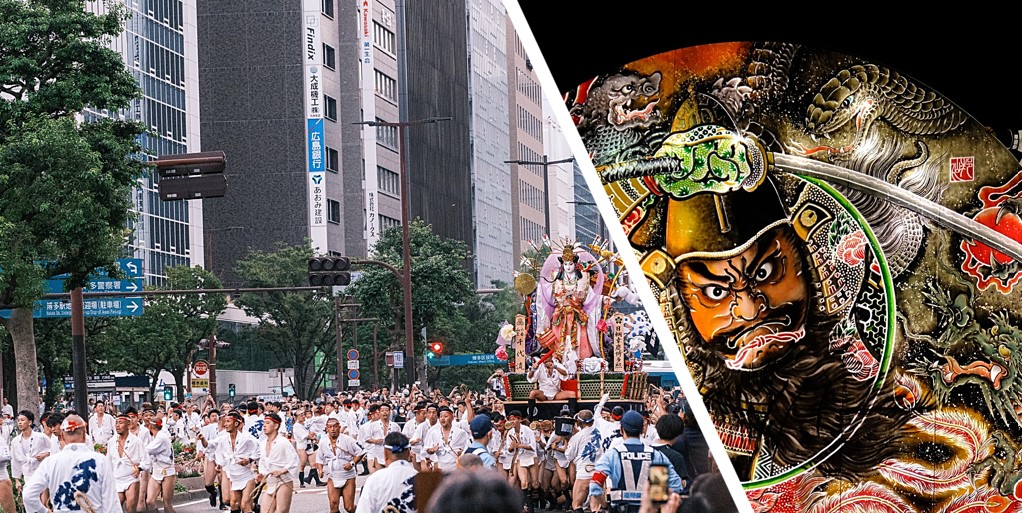
9. Japan’s Festivals: Celebrating Tradition and Unity
Gion Matsuri / Kanda Matsuri / Hanabi (Fireworks) / Awaodori (阿波おどり)
Japan’s festivals, called ‘matsuri’, blend tradition, culture, and community. They create lively, enjoyable moments shared by locals and visitors.
Held mainly in summer and winter, these festivals are unique and happen all over Japan. They each have their own rituals, costumes, and meanings.
One of the oldest and most famous is Kyoto’s Gion Matsuri, lasting a whole month with parades and traditional performances.
Tokyo’s Kanda Matsuri is full of music, costumes, and processions through the city streets, showing off Tokyo’s rich history and culture.
The Awa Odori festival in Tokushima is famous for its simple yet traditional dance parade. Thousands join in the rhythmic dance, creating a fun, united atmosphere.
Most festivals are lively and full of music, but some are quieter. Saitama’s Yomatsuri, for example, has gentle lantern-lit floats and beautiful fireworks, offering a peaceful atmosphere.
In summer, fireworks festivals like Sumidagawa in Tokyo or Omagari in Akita light up the sky with stunning displays.
Aomori’s Nebuta festival has giant illuminated floats depicting historical figures, making a breathtaking parade.
Festivals aren’t just in big cities; small communities all over Japan have their own celebrations. They’re times of togetherness, pride, and culture in Japan.
Joining a matsuri lets you experience Japanese traditions, connect with locals, and make lasting memories.
Whether dancing, watching huge floats, or tasting festival foods, matsuri bring Japan’s heritage to life.

10. A Country of Cleanliness and Environmental Care
Japan is known for its dedication to cleanliness and environmental management all across the nation. The neat streets, parks, and public places in both cities and rural areas often leave a lasting impression.
The word “Mottainai,” meaning ‘what a waste‘ in Japanese, is widely used. It represents Japan’s focus on conserving and saving things, a mindset deeply embedded in its society.
Japan’s society encourages responsible resource use and waste reduction, reflected in its meticulous waste management and recycling practices.
Despite concerns over the Fukushima nuclear disaster waste, Japan’s ongoing efforts in environmental conservation are noteworthy.
Even without many visible trash bins, public places like parks and streets are remarkably clean. During busy festivals or events, workers diligently maintain cleanliness.
This allows visitors to enjoy Japan’s beauty without worrying about litter or pollution.
Japan’s recycling system is efficient and organized. Although trash cans might not be easily found on the streets, various areas have separate bins for different types of waste.
The focus remains on responsible waste disposal, minimizing harm to the environment, and preserving resources.
Japan’s cities are famous for their cleanliness, and this commitment extends to its natural spaces. National parks, hiking trails, and even paths to mountain peaks are impressively clean and well-kept.
Despite concerns regarding the Fukushima nuclear accident, Japan has a longstanding tradition of respecting nature and maintaining a clean environment, deeply ingrained in its citizens.
Cleanliness goes beyond appearances; it reflects Japan’s spirit of respect and consideration. These efforts provide tourists with a clean and enjoyable travel experience and, in many ways, evoke admiration.
11. Japan: The Shopper’s Paradise
Sibuya109 / Akihabara / Harajyuku / Omotesanndo / Ginza / Nakamisedori
Japan has a lot of unique and diverse things. The country is a paradise for shopping, catering to all sorts of tastes and interests.
You’ll find all kinds of things in Japan, from the latest fashion trends and traditional crafts to high-tech gadgets and special souvenirs. People here respect expressing themselves as long as it doesn’t bother others.
Tokyo is the ultimate shopping hub. Each area has small shops that are unique and special. Shibuya has the Shibuya 109 department store, which is a favorite for fashion boutiques.
And Akihabara is where you’ll find everything related to electronics and anime. It’s pretty famous!
Omotesando, often called Tokyo’s fancy shopping street, is full of luxury stores and designer brands for a relaxed shopping experience.
Ginza is the heart of luxury shopping and a symbol of great hospitality. There are famous stores of Japanese and international brands, including the renowned Wako department store.
For traditional crafts, visit Nishiki Market in Kyoto. It’s a covered market known as “Kyoto’s Kitchen,” selling local food and handmade crafts.
Don’t forget the food halls in department stores called “Depachika (Underground Shopping Mall)” There are lots of different foods and snacks from all over Japan.
And for a unique experience, go to Nakamise-dori in Tokyo’s Asakusa. It’s a street with stalls selling traditional Japanese souvenirs and food. Asakusa is a must-visit spot in Tokyo.
Shopping in Japan is more than just buying stuff. It’s an experience of art and skill. Exploring the latest shops in Tokyo or antique shops in Kyoto makes shopping here really special.
12. Where Uniqueness and the Unexpected Thrive
Otaku (Unique) / Maid Cafe / Robot Restaurant / Vending Machines / Team Labo / Crain game (UFO)
Japan is a country full of surprises, embracing the extraordinary alongside its rich traditions.
It’s a place where ordinary things lead to remarkable discoveries, where innovation and tradition go hand in hand.
For those seeking new and different experiences, you can experience an unparalleled adventure.
In Tokyo’s Akihabara district, known as the “Electric Town,” you’ll find a haven for geeky culture. It’s packed with stores selling anime, manga, video games, and electronic gadgets.
AKB48, a famous music group, got its start here, and their music echoes through Akihabara Station when trains arrive.
Ever heard of a Maid Café? It’s where café staff dress up as maids and interact cheerfully with customers. Opinions may vary, but it’s certainly an unusual experience.
Head to the Robot Restaurant in Shinjuku, Tokyo, for an eye-catching experience. Bright neon lights, massive robots, and dazzling performances create an overwhelming atmosphere of wonder and excitement.
It’s a place where you won’t believe your eyes—truly unique and glamorous.
There are also theme cafes where you can enjoy your coffee amidst owls, hedgehogs, and even robots. These spots, there are a chance to escape into a whimsical world, exchanging emotions with animals.
Japan is famous for its vending machines. They’re always introducing new and unique vending machines, sparking endless fascination.
These machines don’t just there snacks and drinks; you can get fresh eggs, umbrellas, sake, neckties, and even ramen! Quite a variety, right?
Harajuku’s Takeshita Street is renowned for its unconventional street fashion. It’s a hub where trends are born, and people express their individuality through wild and colorful clothing.
Art lovers must visit Tokyo’s TeamLab Borderless, an immersive digital art museum blurring the lines between art and technology.
You’ll wander through rooms filled with ever-changing light displays and interactive installations—a journey crossing the boundaries of digital and reality.
The themes of uniqueness, creativity, and discovering something new perfectly capture Japan. From unique hotels to robot-assisted check-ins, there are experiences that are imaginative and distinctive.
Japan’s creativity isn’t just in cities. Nagoro Village in Shikoku is known for its life-sized scarecrow dolls, outnumbering the human population.
It gets quite spooky at night, with more scarecrows than people—a sight to behold!
In Yokohama, there’s a life-sized Gundam—an enormous robot that sits, stands up, and even walks! The original life-sized Gundam is in Odaiba and remains an impressive sight.
Japan’s knack for the unexpected and its dedication to innovation involve embracing surprises, exploring beyond boundaries, and creating incredibly unique experiences.
It’s a land of imagination and focused exploration—Japan, where creativity meets curiosity.
13. Sakura: The Beauty of Cherry Blossoms in Japan
Hanami (Cherry Blossom) / the path of philosophy(哲学の道) / Ueno Park / Hirosaki Castle
Cherry blossoms, also called “Sakura,” hold a special spot in Japan’s culture.
Hanami, the season to enjoy cherry blossoms, marks the arrival of spring from late March to April. Many travelers visit during this time, making it the most popular time of year.
It’s not just about pretty flowers; Hanami is a cultural thing that brings people together for happy celebrations and festivals.
Parks, Gardens, and Streets light up with beautiful pink and white flowers, creating stunning views. Walking under the cherry blossoms in the city makes you feel lighter and forget your worries.
One cool Hanami spot is the Philosopher’s Path in Kyoto. It’s a canal lined with cherry trees, reflecting their flowers on the water and giving a peaceful place for quiet walks.
In Tokyo, Ueno Park is loved by locals and visitors during cherry blossom season. Families have picnics, and there’s a lot of excitement with street vendors. It’s a vibrant time.
The Hirosaki Castle in Aomori Prefecture is like a cherry blossom paradise. Lots of trees bloom there, making it a dreamy place during the cherry blossom festival.
At night, there are “Yozakura” events all over Japan. Lanterns and lights make the blossoms look magical and romantic.
Japanese folks really appreciate how cherry blossoms don’t last long. They see it as a reminder that success from being greedy or wanting too much isn’t so important.
Enjoying cherry blossoms isn’t just about looking at flowers; it’s about having cultural experiences. Temples and shrines have special events, and Hanami parties bring people together to have a good time.
Cherry blossoms aren’t just lovely to see; they inspire art, poems, and even special snacks like Sakura-flavored treats. They’re a big deal in Japanese culture.
Japan’s springtime, filled with blooming cherry blossoms, is a chance to admire nature’s beauty and feel thankful.

14. Studio Ghibli: The Magical World of Animation
Ghibli Museum / Miyazaki
Studio Ghibli, started by Miyazaki Hayao and Takahata Isao, has fascinated people all around the world with its incredible and imaginative movies.
Japan’s love for Ghibli goes beyond just movies, there are lots of different things for a more real and fun experience.
For fans of Ghibli, the Ghibli Museum in Mitaka, Tokyo, is a must-visit place. It’s full of cool things like interactive exhibits, original artworks, and even a garden on the roof that shows how Ghibli movies are made.
The museum building itself is a work of art designed by Miyazaki.
One of the best parts of the museum is that they show Ghibli short films that you can’t see anywhere else, making your visit special and unique.
Ghibli movies get their ideas from places all over Japan and the world.
Cool towns like Colmar in France were the inspiration for movies like “Howl’s Moving Castle,” and Shirakawago, an old village in Gifu Prefecture, was the model for “Princess Mononoke.”
Apart from visiting places that inspired Ghibli movies, you can check out cafes and shops inspired by Miyazaki’s work.
For instance, there’s a cafe in Tokyo’s Kichijoji area that serves food inspired by “Kiki’s Delivery Service.” Also, stores all across Japan sell Ghibli-themed stuff, like toys, clothes, and stationery.
Even in the Skytree Soramachi shopping center in Tokyo, there’s a Ghibli store.
If you’re super into Ghibli and want to get deeper into its world, there are places to stay that guide fans to special spots from their favorite movies.
For example, there are rooms themed around Ghibli at places like Tokyo Disneyland Hotel and Tokyo Disney Resort. There is a fun experience for Ghibli fans of all ages.
The storytelling, art, and imagination of Studio Ghibli have made a big impact on the world of animation, attracting fans from different generations.
Visiting places related to Ghibli in Japan is like stepping into the fantastic world created by Miyazaki and the awesome Ghibli team.

15. Hot Springs (Onsen) and Public Baths (Sento) in Japan
Onsen / Sento / Hakone / Beppu / Hell Hot Spring (Jigoku onsen)
In Japan, there’s a long tradition of hot springs called Onsen and communal baths known as Sento. People love these places for relaxing, staying healthy, and connecting with others.
Onsen, believed to have healing powers, have become a crucial part of Japanese life over centuries.
These hot springs get their mineral-rich water from deep within the Earth.
Every place has its own special minerals that can help with different things—some might be good for skin while others are great for soothing sore muscles and stress.
Imagine soaking in an outdoor hot spring surrounded by nature—a typical Japanese getaway.
Watching the water flow while enjoying views of mountains, forests, or the sea is like a refreshing break.
Hakone, near Tokyo, is super famous for its hot spring resorts and awesome views of Mount Fuji—definitely a must-visit.
Beppu in Kyushu has lots of different hot springs like mud baths or sand baths.
In Kinosaki Onsen, Hyogo Prefecture, you can stroll around in a yukata kimono and try seven different public baths—pretty cool, right?
Now, Sento baths are different because they use regular heated water. They’ve been a part of Japanese city life for ages, its places for folks to relax and hang out.
Going to an Onsen or Sento is a chance to chill out and feel good. The warm water and quiet surroundings are calming for everyone, whether you’re local or visiting.
At these places, you might find extra stuff like saunas, steam rooms, and massages. And after a bath, you can join in traditional relaxation areas.
It’s a bit like Korean spas but with Japan’s special twist.
Japan’s Onsen and Sento bring together old and new traditions. They’re not just about staying healthy—they’re essential spots for a break from city life and finding peace.
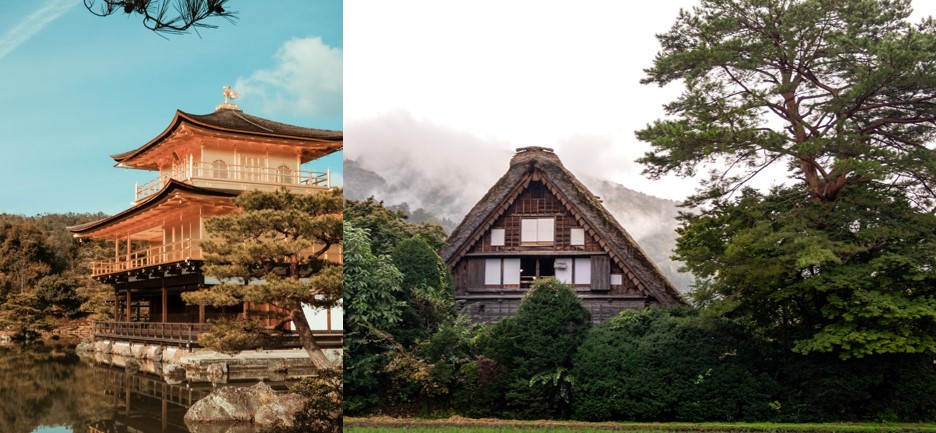
16. UNESCO World Heritage Sites in Japan
Kinkakuji Temple / Hiroshima Atomic Bomb Dome / Todaiji / Shirakawa Village
Japan is home to many UNESCO World Heritage Sites, each rich in cultural significance. These sites represent Japan’s deep appreciation for art, history, and natural beauty.
Visiting these spots is a great way to connect with Japan’s past, present, and future.
In Kyoto, you’ll find Kinkakuji Temple, known for its stunning golden pavilion reflected in a nearby pond. The serene gardens around it create a beautiful harmony.
Hiroshima’s Atomic Bomb Dome in the Peace Memorial Park stands as a powerful symbol of hope and peace.
Nara boasts Todaiji Temple with a colossal Buddha statue and Kasuga Taisha Shrine adorned with mesmerizing rows of lanterns.
Shirakawa-go and Gokayama display traditional thatched-roof farmhouses, some standing for over 250 years. The architectural style resembles praying monks’ hands.
Nikko’s Toshogu Shrine is admired for its remarkable Japanese architecture and art, set amidst breathtaking mountains.
Japan’s UNESCO Sites also showcase natural wonders. Yakushima Island holds ancient cedar forests with trees over 1,000 years old. The Jomon Sugi, estimated at 7,200 years old, is an iconic symbol.
Shirakami-Sanchi, spanning Aomori and Akita Prefectures, hosts one of East Asia’s last virgin beech forests. It’s a haven for hiking and outdoor adventures.
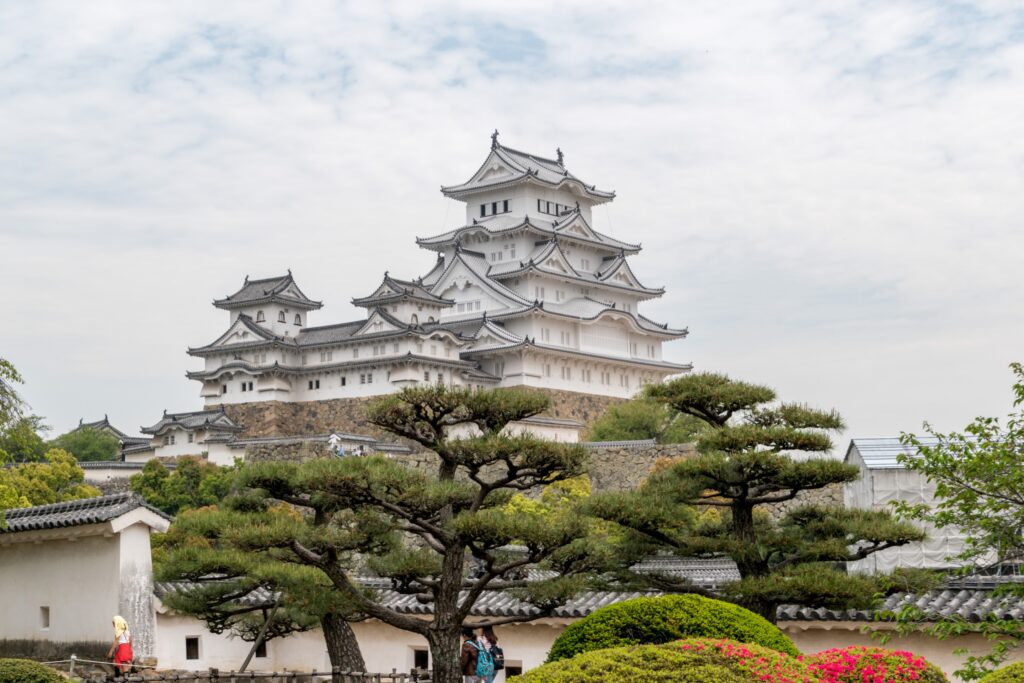
17. Japan: Castle country
Himeji / Matsumoto / Hikone / Kumamoto / Osaka castles
Japan has remarkable castles that showcase not just architectural brilliance but also symbolize the nation’s historical might and the feudal era.
These awe-inspiring buildings reveal Japan’s rich heritage.
Himeji Castle, known as the White Heron Castle, stands tall as a UNESCO World Heritage Site.
Its striking white appearance, intricate defense systems, and elaborate pathways carry immense architectural significance. Inside, there’s a museum exhibiting samurai artifacts and historical displays.
Matsumoto Castle in Nagano Prefecture is a well-preserved treasure. Its unique black exterior earned it the nickname ‘Crow Castle.’
It boasts well-maintained wooden interiors and a fascinating collection of weapons and armor, offering a glimpse into the lives of samurai lords.
Hikone Castle in Shiga Prefecture stands among the few original castles in Japan. Positioned on a hill, there are stunning panoramic views and showcases local history and culture through exhibits.
Kumamoto Castle in Kumamoto Prefecture impresses with its extensive stone walls and grandeur. Despite damage from the 2016 earthquake, ongoing restoration work preserves its historical significance.
Osaka Castle, situated at the heart of Osaka, represents the city’s vitality and history. Its towering structures and vast grounds provide insights into Japan’s feudal times.
Apart from these well-known castles, there are many others, each with its unique charm and historical importance. Castles like Kochi Castle in Kochi Prefecture, Hikone Castle in Shiga, and Okayama Castle in Okayama Prefecture are worth exploring when nearby.
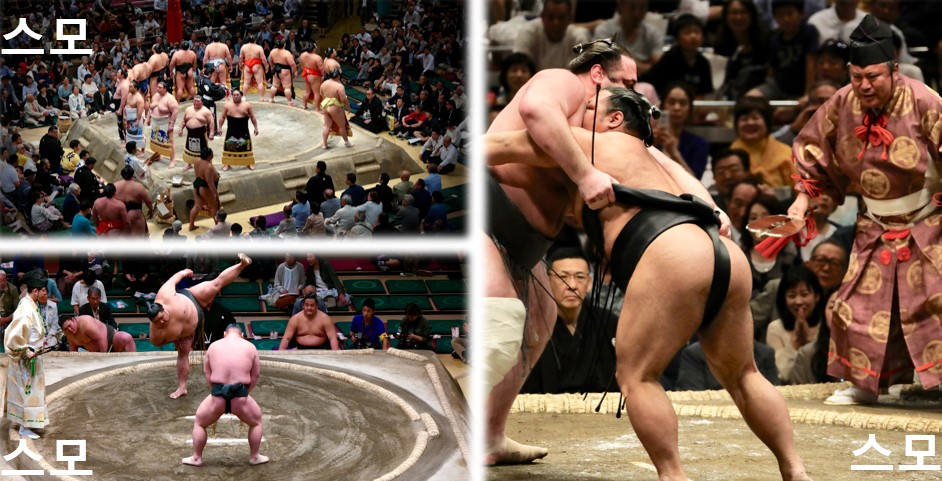
18. Japan: Sumo & Rugby country
Sumo / Rugby
Japan, often called the Land of Sumo and Sports, has a deep-rooted love for sports ingrained in its culture and history, harmonizing various traditional and modern sports.
Sumo, in particular, holds a special place in Japan’s sporting culture, and the significance of this ancient sport is incredibly fascinating.
Sumo is a traditional Japanese sport with over a thousand years of history.
It involves two wrestlers, or ‘rikishi,’ competing to push each other out of the ring or touch the ground with any body part except the soles of their feet.
The rules are relatively simple. Sumo wrestlers are highly respected in society and adhere to strict customs, emphasizing tradition and maintaining rigorous lifestyles in physical training.
The ‘Basho,’ a sumo tournament held six times a year in various cities like Tokyo, Osaka, Nagoya, and Fukuoka, is a prominent sumo event.
The tournament’s elaborate rituals, deliberate moves, and thrilling actions create an enchanting experience that’s hard to escape once you’ve experienced it.
Before each match, sumo wrestlers perform a series of moves called ‘Shiko,’ a ritualistic leg lift, and clap their hands to purify the ring.
The moments just before the match starts, when wrestlers face each other, are filled with heightened tension and anticipation.
The deep and rich symbolism, intricate rituals, and cultural significance of Japanese sports hold a meaning beyond just athletic competitions.
For those wanting to truly experience and understand Japan, attending a sumo match is highly recommended.
Besides sumo, Japan is a hub for diverse sports and events.
Baseball, particularly, enjoys immense popularity among professional teams and passionate fans. Attending a baseball game, whether at Tokyo Dome or other stadiums, contributes significantly to understanding Japanese sports culture.
Rugby, a less popular sport near South Korea, gains massive popularity and attention in Japan. Hosting the 2019 Rugby World Cup and the matches of the national team, known as the Brave Blossoms, have garnered significant attention and enthusiastic fans.
Understanding and experiencing Japan’s passion for sports can greatly enhance the uniqueness of a trip to Japan.

19. Future Tech and Robots
Robotics / Miraikan / Shinkansen / Sky Tree / Tokyo Metropolitan Government
Japan’s known worldwide for its innovation and tech. When you visit, you’ll find hints of both tradition and cutting-edge tech in unexpected places.
Robotics is big here, used in lots of industries like manufacturing and healthcare, with more uses on the horizon.
In Tokyo, you can explore Japan’s robot culture at places like the National Museum of Emerging Science and Innovation (Miraikan) and robot-themed restaurants in Shinjuku.
The Shinkansen, Japan’s super-fast train, is a marvel—safe, fast, and comfy, connecting you all across Japan!
Tokyo’s skyline is a modern design showcase. Check out stunning city views from spots like the Tokyo Skytree or Tokyo Metropolitan Government Building.
And Shibuya Crossing? It’s a traffic marvel, showing off smart city planning.
Japan’s known for eco-friendly cars, especially Toyota and Nissan’s electric and hybrid models.
Car buffs can explore the latest in automotive tech at places like Toyota Mega Web in Tokyo and the Toyota Commemorative Museum of Industry and Technology in Nagoya.
Japan’s also leading in AI and virtual reality. Experience it firsthand at tech hubs and centers in Tokyo.
Though Japan’s internet and IT might not be top-notch compared to places like South Korea or China, Japan’s still got that tech spirit. It’s fascinating to see where they’re headed.
Exploring Japan’s future tech shows their commitment to innovation. It’s a cool mix of Japan’s heritage and what’s coming next in tech.
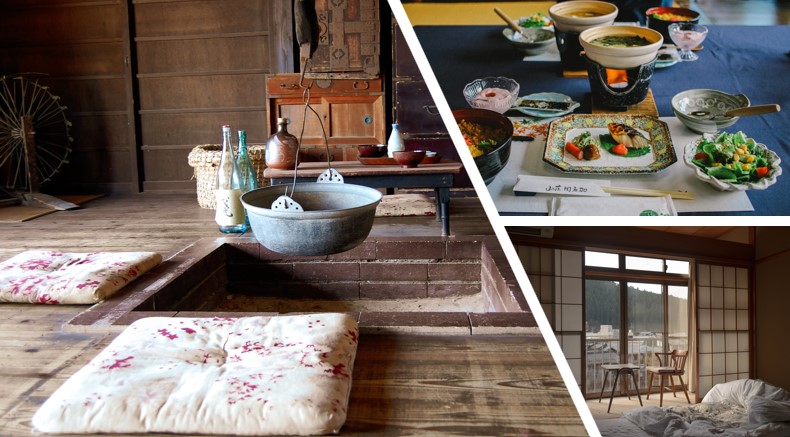
20. Unique & Traditional Accommodations
Hundreds of Years of Ryokan / Capsule Hotel / Shukubo
In Japan, where you stay can be a fascinating mix of old and new. While big cities boast luxury hotels, there are some of the world’s most distinct and unusual places to stay.
From ancient Ryokans, which are traditional inns, to futuristic capsule hotels and creatively themed accommodations, each place promises an unforgettable experience, reshaping your idea of travel and where you stay.
Ryokans are ancient inns that go back to the 8th century.
Here, guests wear a relaxed version of traditional attire, sleep on tatami mats, and enjoy communal spaces like hot springs.
Staying at a Ryokan means savoring a delicious dinner called Washoku, made from local seasonal produce, followed by a breakfast that blends Japanese and Western flavors.
It’s a fantastic way to dive into Japan’s culture and relax in hot springs.
For those curious about experiencing a simple lifestyle akin to that of Buddhist monks, there’s Shukubo, which are temple lodgings.
You can rest peacefully, enjoy Buddhist vegetarian cuisine, and even join morning prayers with the monks.
Capsule hotels, born in Osaka, have spread across Japan.
Initially aimed at budget travelers, these hotels are evolving into more comfortable and upscale options, though not always as budget-friendly as expected.
➡️➡️➡️➡️➡️➡️➡️➡️➡️Best Prices Hurry Up!⬅️⬅️⬅️⬅️⬅️⬅️⬅️⬅️⬅️⬅️
Why don’t you travel to Japan?
There are so many incredible experiences for travelers and tourists.
From its rich cultural heritage and delicious food to stunning natural beauty and technological advances, Japan has something for everyone.
You can explore ancient temples and historical castles, taste amazing Japanese cuisine, marvel at cherry blossoms, join lively festivals like Hanabi and Matsuri, or dive into the lively streets of Tokyo for a day.
Japan’s mix of tradition and innovation, nature and technology, past, and future is fascinating.
Whether you’re new to Japan or a seasoned traveler, its wonder and unique charm will leave lasting memories for all of us.


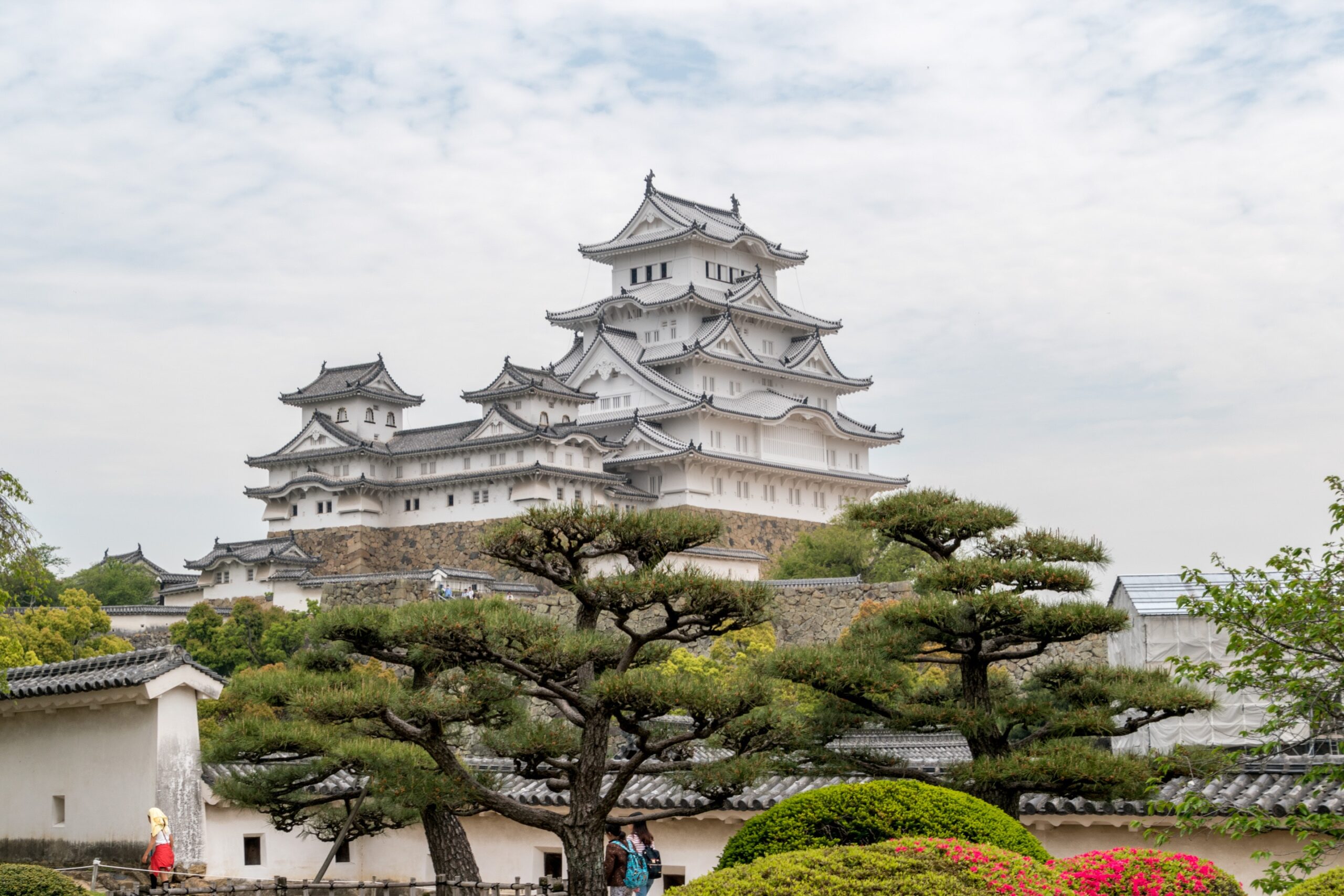


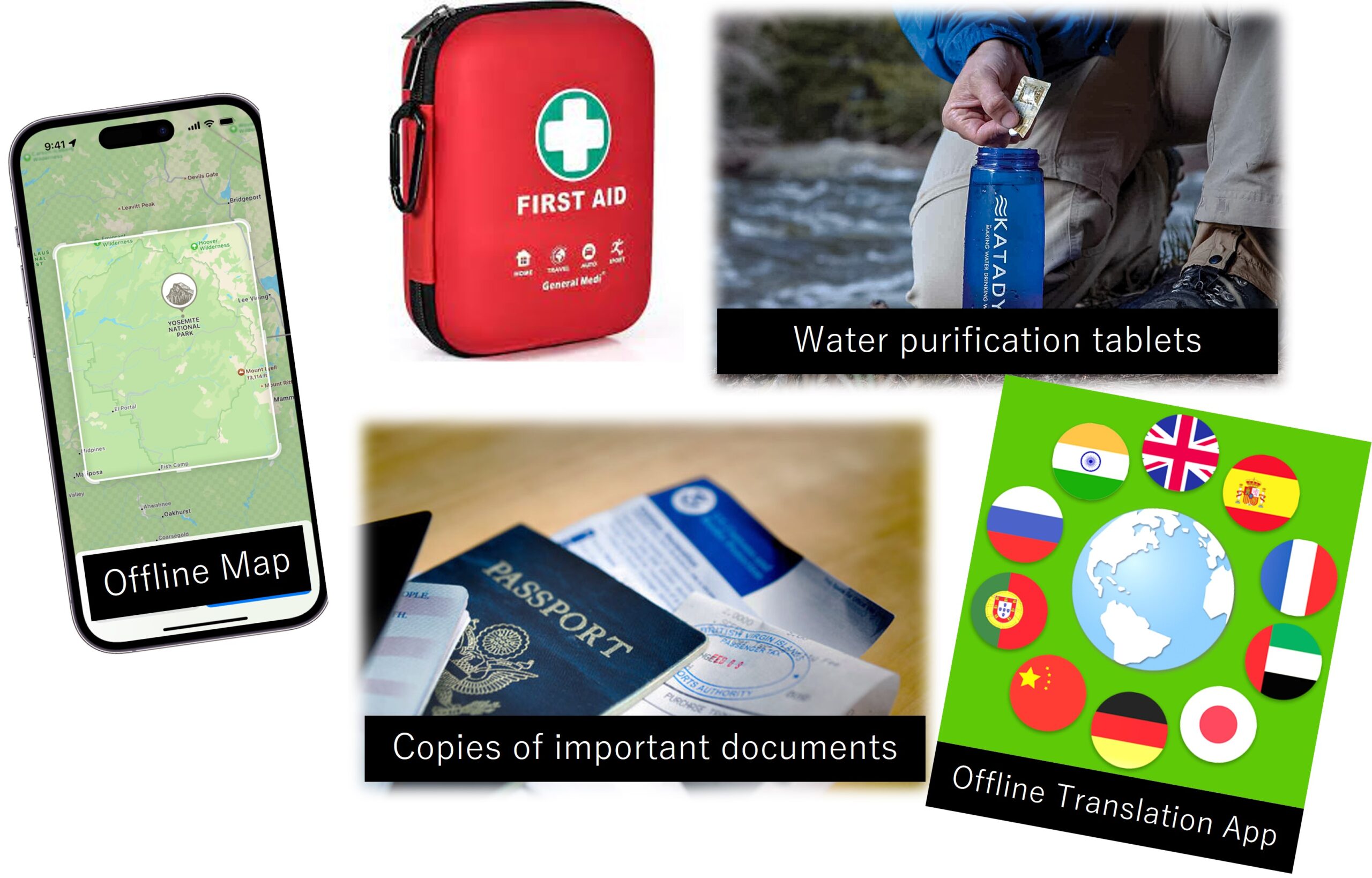


One thought on “20 Things You Must Know For Japan Travel”